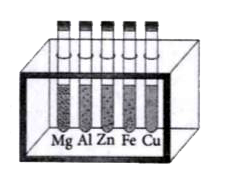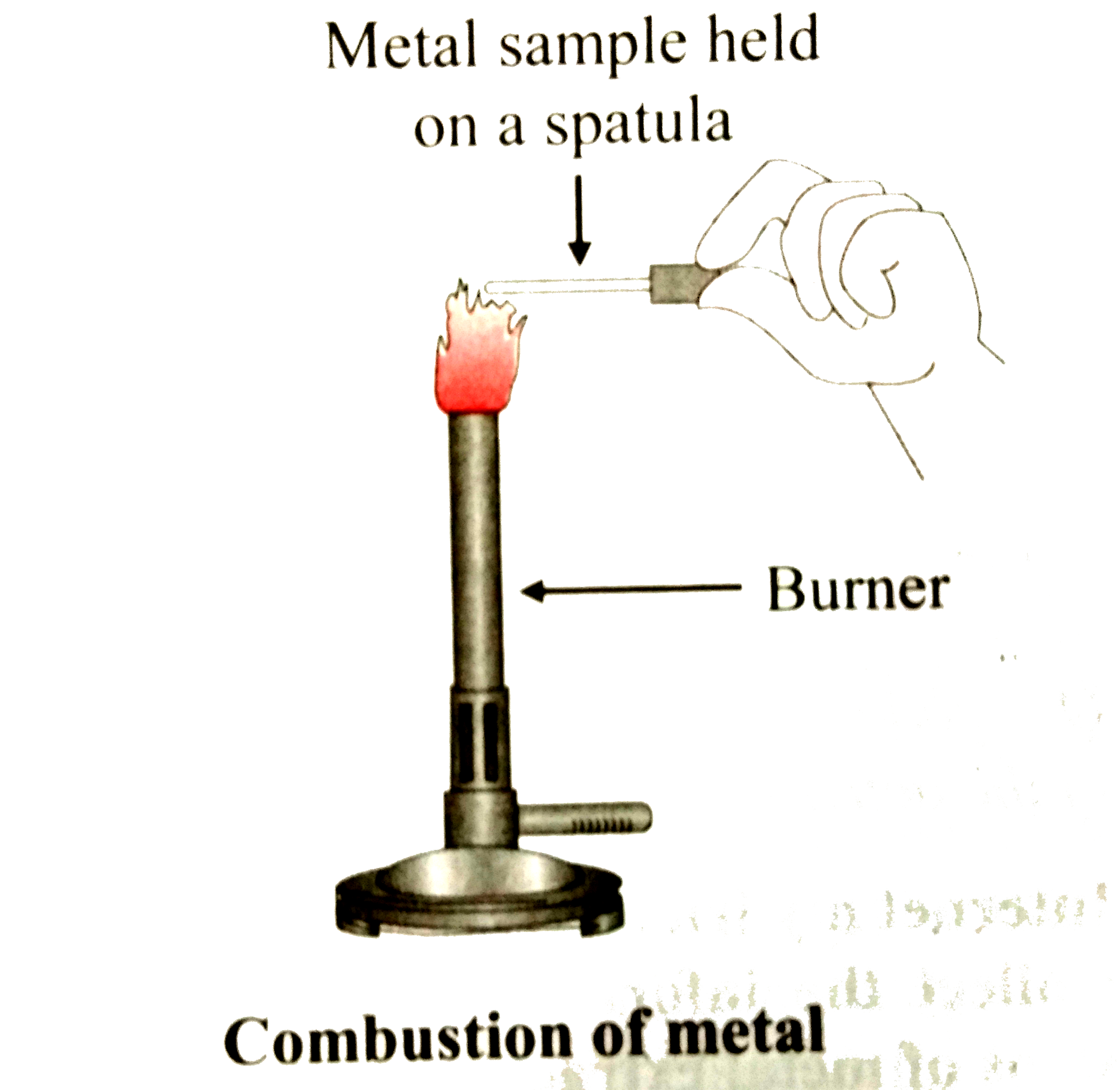Auro, a 10th standard student was asked to identify iron, copper, zinc and aluminium only by observing the effect of action of concentrated nitric acid and caustic soda on each metal. How did he put the eractions of these metals with each of the reagents?
Topper's Solved these Questions
- METALLURGYBook:PEARSON IIT JEE FOUNDATIONChapter:METALLURGYExercise:LEVEL 3
Explore 10 Videos
- METALLURGYBook:PEARSON IIT JEE FOUNDATIONChapter:METALLURGYExercise:LEVEL 1
Explore 40 Videos
- ElectrochemistryBook:PEARSON IIT JEE FOUNDATIONChapter:ElectrochemistryExercise:Level 3
Explore 10 Videos
- MOLE CONCEPT, STOICHIOMETRY AND BEHAVIOUR OF GASES Book:PEARSON IIT JEE FOUNDATIONChapter:MOLE CONCEPT, STOICHIOMETRY AND BEHAVIOUR OF GASES Exercise:Level 3
Explore 9 Videos
Similar Questions
A teacher showed demonstration of action of acids on the metals in the laboratory. After the activity was over, one naughty student took an alluminium rod. He dipped it in a bottle containing concentrated nitric acid. Later, he dipped it in a beaker containing dilute H2SO4 But, he did not find any bubbles coming out. He was surprised because he was able to see bubbles coming out when a metal rod is dipped in sulphuric acid when teacher did the experiment. He then approached the teacher and asked what is wrong with his activity. Predict the answer given by the teacher.
View SolutionA teacher showed demonstration of action of acids on the metals in the laboratory. After the activity was over, one naughty student took an alluminium rod. He dipped it in a bottle containing concentrated nitric acid. Later, he dipped it in a beaker containing dilute H2SO4 But, he did not find any bubbles coming out. He was surprised because he was able to see bubbles coming out when a metal rod is dipped in sulphuric acid when teacher did the experiment. He then approached the teacher and asked what is wrong with his activity. Predict the answer given by the teacher.
View Solution
Knowledge Check
Read the passage carefully and answer the question given below:
Who would have thought that every squeal, squeak and chirp that comes out of the mouth of the humble Gunnison Prairie dog means something ? A three-decade study of these rodents has revealed a language so complex, that is surpasses the communication skills of dolphins, whales and even non-human primates like monkeys!
The stunning findings were revealed by Professor Con Slobodchikoff, who has been recording
The smart little rodents use their words to identify not only who the predator is, i.e. a coyote , human , dog, or a particular kind of bird, but also details like their shape, size color and even the pace at which they are approaching.
To conduct his research, the professor and a number of students from Northern Arizona University, hid inside the prairie dog villages and recorded all the sounds they made. What the team discovered is that these smart creatures are able alert their entire group of many details, (the predator, its color, location, etc.) by sounding just one single 'word'. They do that by modulating or varying the pitch of their voice.
What was also interesting is how the animals responded to each kind of predator. In the case of a coyote, they quickly scampered into their burrows, while for badgers, they simply laid low, to avoid being spotted.
To test their theories, the scientist played back some of the recorded sounds, as well as, asked four volunteers to walk into the prairie village, wearing a different coloured shirt each time, the rodents reacted exactly the same way they had in the presence of the real predator, confirming that the animal had not only conveyed that the predator was a human, but also, whether he/she was fat/thin and the color of the shirt ! Simple fascinating!
While dubbed dogs, thanks to their canine-like barks, Prairie dogs are actually ground dwelling squirrels and part of the rodent family, which includes not only rats and mice, but also, porcupines and beavers. The Gunnison, found primarily in North America, is one of five species that is alive today.
By Meera Dolasia
Question : How did the team study and know more about the rodents ?AThe volunteers wore different shirts when they appeared before themBThey hid inside the prairie dog villages and recorded the soundsCThe scientist played back some of the recorded soundsDThey placed secret cameras at strategic soundsClean small pieces of magnesium, zinc, aluminium, iron and copper by rubbing them with a piece of sand paper. Take them in separate test tubes. Add about 10 mL of dilute hydrochloric acid to each of them.

Consider the following statements.
(i) The rate of evolution of hydrogen gas bubbles is not same in all the test tubes.
(ii) The rate of formation of bubbles is the fastest in the case of magnesium.
(iii) The reactivity decreases in the order:
Mg>Zn>Al>Fe>Cu.
(iv) In the case of copper, no bubbles are seen and the temperature also remains unchanged. This shows that copper does not react with dilute HCl.
Identify the correct option.AOnly (i) and (iv)BOnly (iii) and (iv)COnly (iii)DOnly (i), (ii) and (iv)A student puts one big iron nail each in four test tubes containing solutions of zinc sulphate, aluminium sulphate, copper sulphate and iron sulphate. A reddish-brown coating was observed only on the surface of iron nail which was put in the solution of
Azinc sulphateBiron sulphateCcopper sulphateDaluminium sulphate.
Apparatus: Pairs of tongs or spatula, knife, burner, etc.
Chemicals: Samples of aluminium, copper, iron, lead, magnesium, zinc and sodium.
Procedure: Hold the sample of each of the above metals at the top of the flame of a burner with the help of a pair of tongs, or a spatula

How does the surface of a metal appear on catching fire?
View SolutionSelect the correct word from the list in bracket to complete each statement .
Pure conc . Nitric acid of fuming nitric acid renders the metal _______[zinc /copper/ iron] passive or inactive.
View SolutionFour test tubes were taken and marked A, B, C and D respectively. 2 mL of solution of Al2(SO)3 in water was filled in each of the four test-tubes. Clean piece of metal zinc was placed in test tube A, clean iron nail was put in test tube B, clean copper wire was placed in test tube C and a clean aluminium wire was placed in test tube D. What colour change would you observe in all the four tubes ?
View Solution
